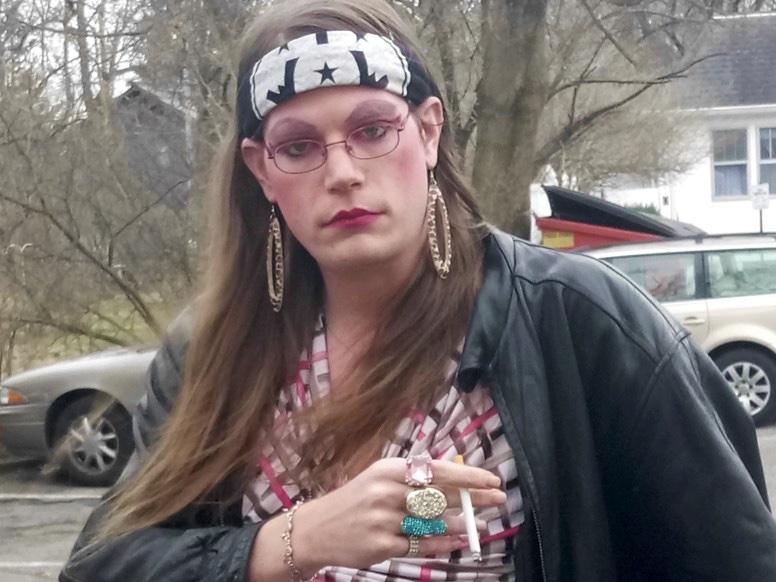Back to the Roots: How A Queer Rock’N’Roller Went Country
By Cher Guevara
Truth be told, I never thought I’d be here writing for a queer country music magazine. When I started in music journalism, I was a headbanger through and through, looking for the fastest, loudest, heaviest, meanest heavy metal on the planet to write about. (As a heads up, the search for loudest, fastest, heaviest usually ends when you discover grindcore, Napalm Death’s Scum is the ultimate in that category.)
Not only did I never imagine I’d end up writing for a queer country music magazine, I never thought such a thing could even exist. Growing up, most of the country music I heard on the radio or through my family was mainstream, aggressively nationalistic, aggressively straight, and mass-produced, everything that queer music wasn’t supposed to be.
But nonetheless, here I am. This is the story of how I got here.
I truly discovered country music in college through some friends of mine. They turned me on to the alt-country scene, cats like the Cowboy Junkies, Uncle Tupelo, Hank Williams III, and Gob Iron. It was contemporary country with grit, gut, and soul, and most importantly, contemporary country music that didn’t sound mass produced in some studio in the bowels of Nashville where the bands are cloned from the instruments down to the accents of the singers.
After I discovered contemporary country music that didn’t suck, I started going through my old man’s record collection. My dad, being from the hills of North Carolina, grew up listening to country, and soon I found albums by Hank Williams, Waylon Jennings, Commander Cody & His Lost Planet Airmen, Johnny Cash, and my personal favorite: George Jones.
I kept digging and found my own family amongst the records. My cousin Eric Ellis made a name for himself as one of the finest banjo players in the country, even earning a place in the Blue Ridge Music Hall of Fame for his pickin’. I listened to Cousin Eric’s albums and started finding bluegrass legends such as the Osborne Brothers, Ralph Stanley & the Clinch Mountain Boys, and Earl Scruggs. As a headbanger, I loved bluegrass. Those banjo players picked faster and harder than just about any thrash band I had ever heard.
Now I had found great country music. Music that was true and honest. So where does the queer part come in?
Honestly, I discovered queer country music almost totally by accident. At the time, I was running a weekly queer radio show called The Rainbow Asylum with my buddy Mikester, and since I’ve always been a bit of an amateur music archivist (it goes with my obsessive personality), I ended up programming the music we played on the air.
I was always looking for hidden queer gems to spin, and like my past as a music journalist, we played a lot of queer rock’n’roll; a lot of Pansy Division (we later ended up having two of the members on the air as guests), Against Me, forgotten 70’s glam acts like Smokey, and Jobriath, weird contemporary acts like The Sulkies, Daniel Versus the World, and Nuclear Family.
One of our long time listeners and one of my old friends Sister Chloe Hall asked if I had any queer country music we could play on the air. I said I wasn’t sure, but I could certainly try to find some.
By chance, somebody had put up an old vinyl rip of an album from a band called Lavender Country. It had come out in the early 70’s on some tiny little label. I listened to the tracks. They sounded a bit scratchy, but what the hell? We were an underground radio show – a bit of scratchiness wouldn’t bother our listeners.
The album absolutely blew me away. Here was a band that sounded like the old-style country bands I had found through my dad’s record collection, but they were singing out, loud, and proud about queer life and queer revolution. I played a couple tracks on the air and our listeners loved it: they had never heard anything like it either.
We later had the lead singer of Lavender Country, Patrick Haggerty, on the air as a guest, and he ended up being one of the best interviews we ever did. Usually our show ran two hours. That night we ran three hours as we and our listeners sat enthralled at the stories he told about kicking ass on the picket lines and playing his twangy music to go with it.
With the discovery of Lavender Country and the friendship I formed with Mr. Haggerty, the floodgates were open for me; I found other queer country acts such as Eli Conley, Orville Peck, Mya Byrne, and Paisley Fields.
It had come full circle for me: I had discovered good honest country music in college, and found queer country music sitting behind the tune controls of an underground radio show.
As far as the music journalism part, this is the first journalism gig I’ve had where the focus is primarily on country music. This is a new venture for me, but what the hell? As one of my heroes once said during an assignment, “Buy the ticket, take the ride…”

Cher Guevara is a long-time underground queer artist and journalist from Avon, IN. In addition to their journalism work, they are a critically acclaimed poet and member of Indy’s Midnight Shadow Cast Transylvanian Lip Treatment. They are non-binary; their pronouns are they/them.